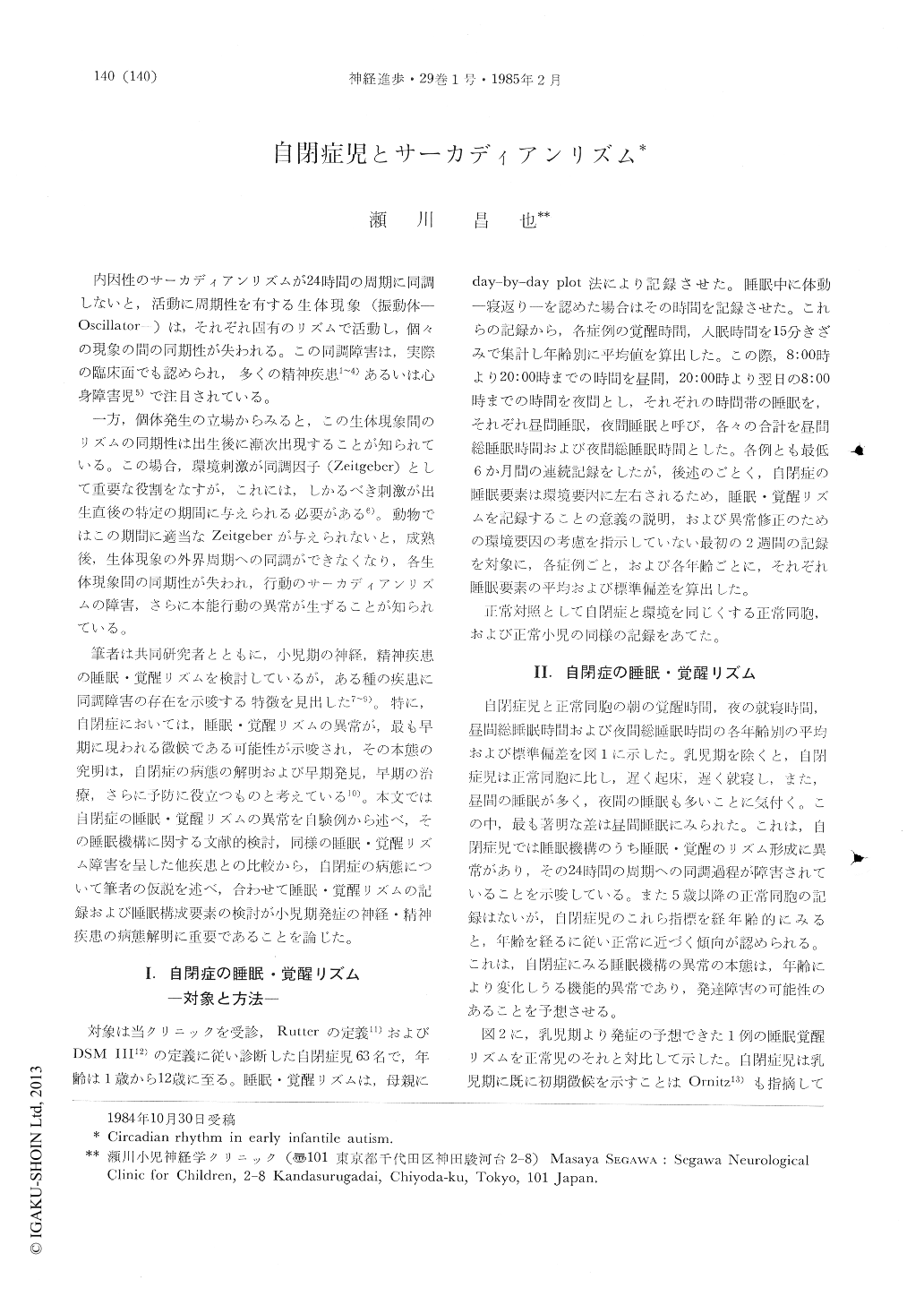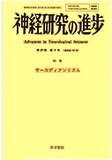Japanese
English
- 有料閲覧
- Abstract 文献概要
- 1ページ目 Look Inside
内因性のサーカディアンリズムが24時間の周期に同調しないと,活動に周期性を有する生体現象(振動体―Oscillator―)は,それぞれ固有のリズムで活動し,個々の現象の間の同期性が失われる。この同調障害は,実際の臨床面でも認められ,多くの精神疾患1〜4))あるいは心身障害児5)で注目されている。
一方,個体発生の立場からみると,この生体現象間のリズムの同期性は出生後に漸次出現することが知られている。この場合,環境刺激が同調因子(Zeitgeber)として重要な役割をなすが,これには,しかるべき刺激が出生直後の特定の期間に与えられる必要がある6)。動物ではこの期間に適当なZeitgeberが与えられないと,成熟後,生体現象の外界周期への同調ができなくなり,各生体現象間の同期性が失われ,行動のサーカディアンリズムの障害,さらに本能行動の異常が生ずることが知られている。
Certain system or neurons in the CNS vary their activities with their own identical periodicities, of which some belong to the ultradianrhythm and others to the circadian rhythm. With various but specific environmental stimulations, these periodicities, particularly those of the circadian rhythm, are entrained to the 24-hour cycle. This entrainment to the 24-hour cycle is thought to be important for the performance of normal behavior.

Copyright © 1985, Igaku-Shoin Ltd. All rights reserved.


